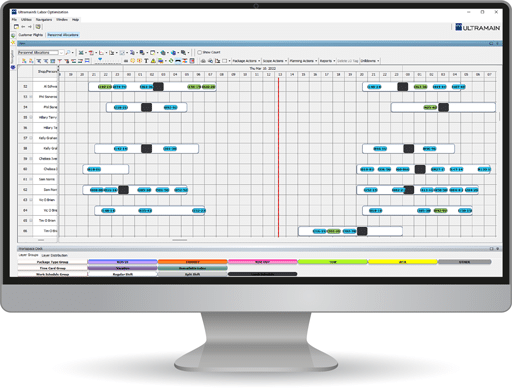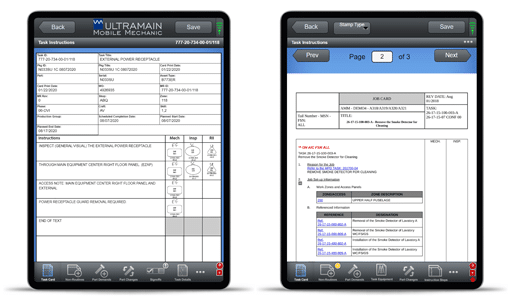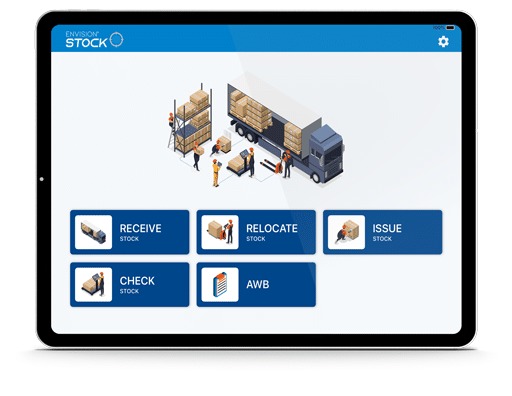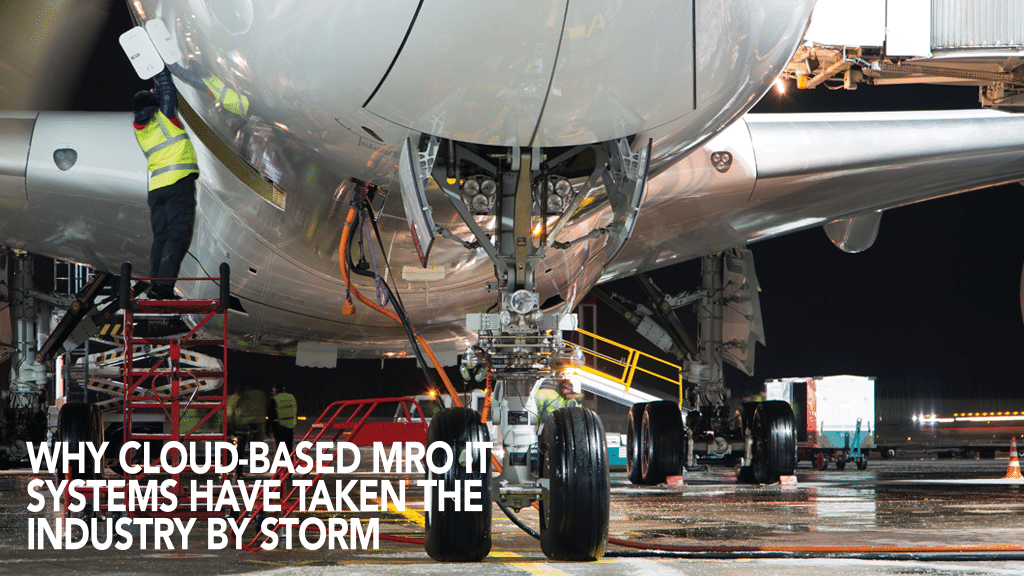In recent years, cloud-based MRO IT software systems have made significant inroads into the aviation maintenance industry, and for good reason. These systems have brought enterprise-wide integration of corporate operations to their users, by providing real-time access to critical data. As well, one of the big advantages of cloud-based MRO IT systems is that customers “do not have to purchase, staff, and maintain their own physical server facilities,” said John Stone, vice president of product management for ULTRAMAIN, the provider of the cloud-based MRO IT system under the same name. “We do all that for them through our cloud offering.”

A Range of Choices
There are currently several cloud-based MRO IT systems available to the aviation maintenance industry. In general, these systems “are tailored for the aviation industry, helping to streamline maintenance and airworthiness management for airline operators, CAMOs (continuous airworthiness management organizations) and MROs across the world,” said Faraz Khalid. He is head of product for OASES, another same-named maker of a cloud-based MRO IT system.

Another MRO IT systems contender is the Ramco Aviation Solution. Made by Ramco Solutions, “it is a fully web-centric application developed from the ground up, specifically for the aviation industry,” said Saravanan Rajarajan, Ramco Systems’ director of solution consulting. “This solution offers an integrated platform for airline, MRO, defense, and helicopter customers to manage functions like maintenance and engineering, supply chain, safety, compliance, quality, planning, and financial control.”
A fourth MRO IT system called ENVISION is made by Rusada (now part of Veryon).

“Rusada has developed a multi-discipline maintenance platform hosted in the cloud,” said Richard Landsbury, the company’s sales director. Like many of its competitors, “ENVISION specializes in the areas of airworthiness, maintenance, and flight operations, allowing aircraft operators and maintainers to maximize their operational efficiency.”
Constantly Evolving
Customer and operational demands are ever evolving in the MRO industry, and MRO IT systems are constantly evolving to keep up with them.
A case in point: ULTRAMAIN is regularly updated “to ensure it remains current with the latest technology trends and needs of the industry,” said Stone. Such upgrades include “built-in help in the form of Just-in-Time (JiT) training videos to reduce training overheads and help users better understand areas of the software they use less frequently.” After all, good help is hard to find anywhere. If an ULTRAMAIN user has extensive help through JiT training videos at the touch of a mouse, it prevents downtime due to staff struggling to find the right answer.
That’s not all: ULTRAMAIN now has a mobile inventory-based stocktaking feature to “reduce the overheads and improve the accuracy of stocktaking,” Stone said. Meanwhile, the ‘Sales Management Application’ found in ULTRAMAIN “better serves the needs of our customers that provide third party services and reduces the costs associated with maintaining a separate Sales Management system.”
Over at OASES, the company has spent the last two years enhancing its MRO IT system with the launch of OASES Mobile and OASES Cloud and adding two-factor authorization to their platform. As well, “we’re excited to announce the upcoming deployment of OASES Release 11.0.0,” said Khalid. “This update not only offers quality of life enhancements but also introduces significant new features to our entire software suite.”

These new features include the OASES Gateway, which supports seamless integration with other third-party systems and workflows. “Furthermore, we’re unveiling OASES Insights, an advanced business analytics tool specifically for the aviation industry,” Khalid said. “With OASES Insights, customers can effectively analyze, visualize, and interpret data from their daily operations. This empowers teams to anticipate and mitigate challenges, boost efficiency, and achieve substantial time and cost savings.”

Over the years, Ramco’s aviation software has enhanced its MRO capabilities covering all MRO subsegments such as Engines, Airframe, Hangar, and Components. The latest version includes advanced functionalities and brings new product capabilities to the market.
For instance, “Our MRO Contract Management solution enables customers to model over 150 variants of contracts across various MRO business segments with micro-level management of out-of-scope, capping terms, and conditions,” said Rajarajan. “Our new Enhancements in Work order scheduling leverages our optimization tools to enable organizations to optimize their existing labor, capacity, and material resources. We also have added functionalities to simplify complex assembly maintenance with comprehensive improvements in work planning, execution, closure, and invoicing functions — enabling the complete end-to-end management of contract-to-cash processes within the system.”
Next, ENVISION is supporting digitalization through two new methods for paperless maintenance planning and execution. Landsbury said, “Our digital task card functionality allows users to upload aircraft maintenance programs and manuals directly into ENVISION, which can then automatically extract and create digital versions of the maintenance tasks. Users can then add additional content, book time, and sign-off, all within the system, removing the need for paper records.”
The professionals at Rusada have “put a much greater focus on mobility and digitization in the last two years,” Landsbury said. “On the mobility side, we have released two new apps to streamline the functions of stock management and flights, opening up ENVISION to more users on more devices and allowing for data capture at the source.”
In October 2023, Rusada introduced ENVISION’s PDF Task Integrator to the MRO market. It adds the ability to upload, augment, and execute task cards provided in PDF format to the system, simplifying what was traditionally a very manual and paper-based process.
Crunching Data, Delivering Benefits
With its ability to collect, integrate, and analyze information across an MRO’s entire operation, cloud-based MRO IT systems are adept at ‘crunching the data’ for their users. This allows these users to better manage projects, identify trends in equipment failures, and generally improve the efficiency and cost-effectiveness of their processes — and their turnaround time for clients.
But is it all worth it? Does cloud-based software actually save money for the MROs that invest in it? According to Stone, the answer to this question is “absolutely.” And all the other software suppliers interviewed for this article echo his belief.
The reason? “Fully connected all digital solutions such as ULTRAMAIN provide more clarity in all aspects of the maintenance process, from planning to execution to post execution analysis to eliminating inefficiencies and reducing costs such as those associated incurred using paper,” explained Stone. “Improvement in all areas improves the bottom line.”
Streamlining operations is also key to savings. For example, “OASES provides MROs with cost savings by fine-tuning maintenance schedules, reducing unexpected downtime, and boosting overall operational efficiency,” said Khalid. “This streamlines maintenance procedures, prevents superfluous maintenance, and ensures that aircraft and equipment remain operational, thereby decreasing costly disruptions.”
As for the cost of occurring and running an MRO IT system? “While initial investments in IT infrastructure can be substantial, embracing cloud solutions like OASES Cloud allows MROs to convert these capital expenditures into operational costs,” Khalid replied. “This can lead to savings on IT staffing and maintenance. Furthermore, cloud solutions grant MROs the flexibility to easily scale based on their needs. As fleets expand or contract, the cloud infrastructure can adapt without requiring significant new hardware investments. Utilizing a cloud-based MRO solution like OASES ensures aircraft spend more time in the air transporting passengers and less time grounded in hangars for repairs and maintenance.”
Efficiencies also come from integrating systems that previously hadn’t been well aligned. In this regard, “Ramco’s MRO solution helps in digitally transforming complex MRO processes,” said Rajarajan. “The integrated solution helps in improving efficiencies and productivity. This is primarily achieved through digitization and eliminating paper, automation of processes either through the workflow rule or intelligent decision assistants, mobile operations of positions such as mechanics and warehouse persons to increase productivity.”
Another form of savings occurs when MROs effectively manage their time. “By having the ability to plan and schedule maintenance more effectively, MROs can reduce downtime between jobs, and ensure they are utilizing their staff in the most efficient manner,” Landsbury said. “For parts and tools, the data that our system collects allows you to refine your min/max stock levels in a much more scientific way and therefore reduce the amount you over or understock. The system’s management of tools works in a similar fashion, and also allows you to keep on top of maintenance jobs, ensuring tools are more readily available. This reduces the time that mechanics or technicians spend waiting around for parts and tools when they could be working on an aircraft. Finally, by having the ability to plan, assign, and execute maintenance digitally, without numerous paper records circulating round, you can save significant amounts of time across multiple employees.”

Keeping Data Safe
Data security is an issue for every business. Cloud-based applications tend to elicit an “Oh, is it safe?” reaction from potential customers: Is the data secure when you’re working with an application that is housed in the cloud?
Fortunately, the answer is yes. This is because this data is protected by encryption and firewalls. It’s a myth that cloud-based applications are “easy to hack”. They’re not.
A case in point: ULTRAMAIN’s data protection has been hardened by “blocking paths and methods for malware,” said Stone. “Data is encrypted at rest and in transit. Our cloud offering keeps ULTRAMAIN running on a well-performing hardware stack that includes state-of-the-art cybersecurity protections that client devices can connect to via the internet. Our offering includes a redundant failover environment in a separate facility to reduce the risk associated with server failures or localized internet outages. We also provide managed services to monitor and update the solution as required, including health monitoring for ULTRAMAIN on behalf of our customers. Finally, ULTRAMAIN provides comprehensive access controls and management tools based on user roles that are easy to manage but yet powerful.”
OASES has the same dedication to data security. “We have robust encryption, regular security updates, and stringent access controls,” Khalid said. “Furthermore, our collaboration with Amazon Web Services (AWS) leverages their significant investments in security infrastructure. This provides our users with advanced features such as network security, configuration management, access control, and data encryption. AWS’ infrastructure is consistently audited and holds certifications from various accrediting bodies, ensuring that its security measures are always current and robust. Moreover, we actively guide and assist our clients in adopting the best practices for data protection and cybersecurity within OASES.”
Ramco takes it a step further. “We sign data protection agreements with our customers detailing our measures to protect their data,” said Rajarajan. “Data in transit is encrypted using TLS1.2 protocol, and data at rest stored in storage is encrypted using the AES-256 algorithm. Transparent Data Encryption (TDE) is utilized to encrypt data at the database level. We also have ‘Security for Privacy’ measures to protect customer information through role-based access controls, segregation of duties, and privileged access management for authorized administrators with multi-factor authentication. As well, we don’t engage subcontractors/sub-processors in delivering services to our customers, thereby reducing the risk due to re-entrustment.”
At Rusada, “ENVISION provides several robust features to ensure the security of data and information,” said Landsbury. “Within the solution itself, access to information is heavily controlled by a role management system, where users are only allowed to access the areas assigned to their roles. This can drill down all the way to field level, to provide a highly customizable set of access rules and protect sensitive data. ENVISION also implements measures such as encryption, authentication, authorization, auditing, backup, and recovery, to ensure the confidentiality, integrity, and availability of data and the system. There is multifactor authentication provided through single sign-on via the Microsoft active directory server. ENVISION also supports Microsoft’s Active Directory Federation Services and SSO concepts to provide a more robust and secure experience.”
The Power of the Cloud
We have already demonstrated the security of cloud-based MRO IT systems. But there are other reasons why MROs are moving to the cloud to better manage their operations.
“Cloud-based systems are becoming increasingly popular with MROs, thanks to their scalability, cost-effective infrastructure, and the ability to access real-time data from any location, greatly improving operational efficiency,” said Khalid. “We are definitely seeing more and more MROs acknowledging the lasting benefits of adopting cloud-based solutions which makes them an attractive option for their operations.
“The majority of Ramco’s customers are using cloud-based deployments,” Rajarajan said. “This is because hosting on the cloud is proven to have a better value proposition than on-premises, due to a reduction in both CAPEX and OPEX expenditures. In the cloud, no capital expenses are required for setting up an infrastructure. We take end-to-end ownership to monitor and manage cloud infrastructure, databases, and applications on a 24/7 basis for our clients, enabling MROs to focus on their core operations. Hosting on the cloud also enables quick and more accessible infrastructure upgrades as their businesses grow.”
Landsbury agrees. “The current trend we’re seeing is a move to more modern, web-based solutions that can be hosted in the cloud,” he said.”The benefits of cloud hosting are primarily that you, as a business, don’t then need to worry about maintaining and updating systems and servers yourself. By choosing a cloud-hosted solution you can also guarantee a fixed monthly hosting cost and avoid any large one-off costs that on-premises hosting can incur. Additionally, hosting can provide faster and simpler access to additional data points needed for predictive analytics.”
The bottom line: “The sooner an organization goes to the cloud, the sooner it opens the door to these benefits,” said Stone.

What’s to Come
Looking ahead to the future of cloud-based MRO IT software systems, one can expect advances in areas such as predictive maintenance algorithms, remote asset monitoring, and enhanced integration with other enterprise systems. The ability to leverage real-time data from connected devices will also help MROs and their clients to proactively address maintenance issues before they escalate into costly Aircraft on Ground situations.

Ramco
“Upcoming advances in cloud-based MRO/CAMO IT software systems are set to integrate more sophisticated AI and machine learning (ML) applications, vastly enhancing predictive maintenance capabilities,” said Khalid. “Moreover, we think there will be much deeper integration with IoT (Internet of Things) devices in the future. These forthcoming improvements promise heightened efficiency and precision in aviation maintenance and airworthiness management. The use of more potent computing resources for AI applications seems a natural evolution for cloud-based MRO software.”
The confluence of AI/ML, mobile, and 5G technologies will be game changers and enable MROs to achieve higher operational efficiencies. In the MRO industry, “this may involve integrating ERP systems, EFBs, mobile and wearable technologies, and embedded IoT and external systems seamlessly interlinked,” Rajarajan said. “As an MRO organization accumulates a wealth of such data, AI/ML technologies will be able to mine deep insights and be trained to make intelligent decisions. We expect the intersection of these technologies to unlock some interesting capabilities in MRO software, thereby delivering better value to aviation organizations.”
“We at Rusada believe the infusion of AI with MRO IT software systems has the potential to bring countless benefits to users,” said Landsbury. “Our ENVISION solution already captures vast amounts of data from across the operational spectrum, and the quickest and simplest way to take advantage of that information would be to let AI analyze it and assist with some of the more analysis-based tasks. This could include everything from maintenance forecasting, to inventory planning, to staffing requirements where AI makes suggestions based on the information it is receiving from across the company, plus any historical trends. This would dramatically increase the efficiency of many MRO operations.”
All told, the quality and power of cloud-based MRO IT systems have made great strides in recent years — and they are likely to become even more useful and powerful in the years to come.
